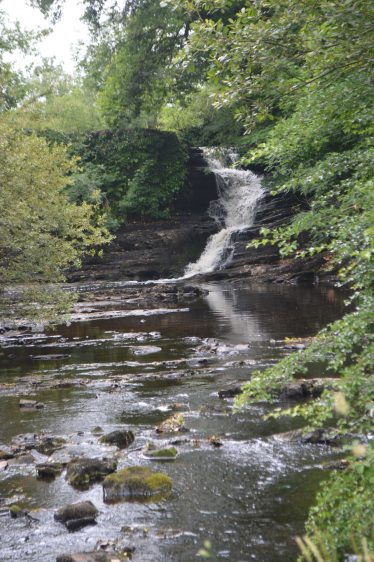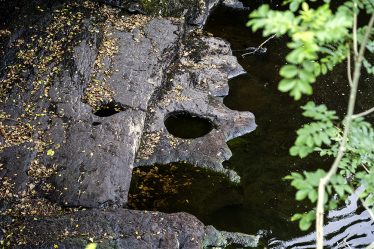Toberscreavaun, Tobar Screabhán, previously Tobar Sgreabhán


Townland: Lanna, Clondegad
Description of Holy Well and Landscape Setting
The well is made up of a series of rock pools at the base of a 20 foot waterfall in the River Abhann Sliabh, north-west of Kilfiddane Church and Graveyard.
Saint and Feast Day Associated with Holy Well
10th September is the traditional feast day associated with Saint Screabhán. John O’Donovan and Eugene O’Curry, writing as part of their work with the Ordnance Survey in 1839, mention that the well is known ‘for the cure of sore eyes and protection against the fairies’.
O’Donovan also writes that an ash tree was growing over Sgreabhán’s bed and that on the opposite side of Abhann Sliabh there were three small wells in the rock called ‘Tobar Sgreavain’.
Natural Heritage around the Holy Well
Some fine ash trees are present at the location. There are numerous trees on both banks of the river.
Heritage Attractions Nearby
The remains of an old mill system lie close to the waterfall on the south bank.
Lissycasey Village to the north and Ballynacally Village to the south are less than a 15 minute drive. The old Clondagad Ghurch and Graveyard are a few fields away from the south bank of the river.
Additional Information
T.J. Westropp writes that the names Screabhán and Nidduan, the two saints who argued over territorial rights (see Saint Niddaun’s Well, Clondegad), may be a memory from pre-Christian times. This is further hinted at in the Ordnance Survey records when Screabhan’s Well is said to protect against the ‘sídhe’ or fairy mischief.
Discover More…
Ordnance Survey Letters, Royal Irish Academy
Ordnance Survey Letters, Ask About Ireland
Hester, M ‘The Holy Wells of Ballynacally and Lissycasey’, The Other Clare, vol.39, pp 74-77.
Westropp, T.J. 1912, A Folklore Survey of County Clare, edited by Maureen Comber 2000, CLASP Press, Ennis.
Record of Monuments and Places Number
RMP-CL050-008




No Comments
Add a comment about this page